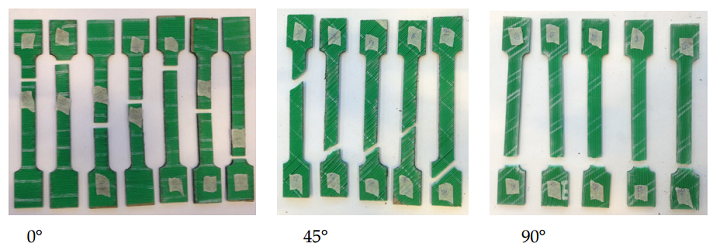From bacteria and metamaterials to shape-shifting and support-free, the innovative researchers at TU Delft have worked with a wide variety of 3D printing materials over the years. Now, their focus is shifting to polypropylene, a thermoplastic polymer used in a variety of applications, though engineering is not typically among these.
TU Delft researchers Fred Veer, Foteini Setaki, and Ton Riemslag, together with P. Sakkas from The New Raw, have published a new paper, titled “The strength and ductility of glass fibre reinforced 3D-printed polypropylene,” that discusses the technical possibilities for making 3D printed engineering components based on reused polypropylene.
The abstract reads, “The possibility of using a mix of recycled polypropylene (PP) with new glass fibre reinforced polypropylene as a materials source for 3D printed engineering components is investigated. The strength and elongation to fracture are determined for various grades of material and in relation to the print direction. The measured values are compared with literature values for these materials in an as new condition. It is shown that the use of recycled PP degrades the material properties. PP recycled from house hold waste has significantly worse properties than PP recycled from industrial waste.”
A lot of primary material is used to create disposable molds out of virgin plastic for construction purposes, which is not great news from an environmental standpoint. It’s far more practical to use recycled plastics as raw materials, and research has been conducted in the past regarding the use of recycled high density polyethylene. But PP has better mechanical properties, and has the correct thermal properties for 3D printing.
Unfortunately, recycled PP is far less strong than unused PP. In order to achieve the desired properties, recycled PP is often mixed with the virgin material and fibers.
“For this research different mixtures of recycled, re-recycled and virgin polypropylene with short glass fibres were tested to look at the various factors influencing the overall properties,” the team wrote. “This research focussed on the failure strength and strain of the material as these are good indicators for materials performance and are also suitable to compare the different mixtures.”
The researchers blended mixtures of recycled, re-recycled and virgin PP with short glass fibers, then inserted the material into a heated extruder with four chambers to be 3D printed into sheets. The sheets were then laser cut into dog bone-shaped specimens and tested using a Zwick z10 universal testing machine.
“For mixtures 1 and 2 the properties were determined in the print direction, 0°, at 45° to the print direction and at 90° to the print direction,” the researchers explained. “Mixtures 3, 4 and 5 were only tested in the 0° direction in order to allow comparison between the mixtures.”
The results show clearly that the predictability of the strength of a material mixture was degraded by the use of recycling, unfortunately. In addition, it’s implied that the print direction has to be taken into account in any design, and that the structure must be modeled using direction dependent properties. Because we’re dealing with composite materials, the researchers explained that “the engineering effort will be much greater than with conventional materials.”
Another important factor to take into account is the quality of the recycled material: the average of mixture 1’s strength was only about 85% of the average strength of the virgin 10% glass fiber-filled PP homo polymer. There’s also a major decrease in properties – a 35% loss of strength – when a print was recycled. Properties were also significantly degraded when household waste was used as a recycled PP source, as opposed to industrial waste.
“Adding more glass fibres and using less recycled polypropylene gives a mixture that more clearly approaches that of virgin material. An eco-friendly design using large amounts of recycled material will thus always have significantly decreased properties, leading to the use of more material,” the researchers concluded. “In itself this does not have to be a problem, using a larger amount of waste material also means less waste to burn. It is, however, also clear that reusing the material more than once leads to more significant loss of properties as is evident from the loss of properties of mixtures 3 and 4 compared with mixtures 1 and 2. Using recycled polypropylene for products with a short service life is thus counterproductive as it produces unusable waste which can only be burned, as it will not biologically degrade in a land fill. It is thus important to use recycled polypropylene in such a way that a sufficiently long life time is achieved with a clear route for final disposal at the end.”
The team also stated that there appeared to be no clear relation between strain at fracture and failure stress, and determined that properties at 45° or 90° to the print direction are much lower than in the print direction.
Discuss this research and other 3D printing topics at 3DPrintBoard.com or share your thoughts below.





146 Replies to “Technical Possibilities for Making 3D Printed Engineering Components Based on Reused Polypropylene”
Comments are closed.